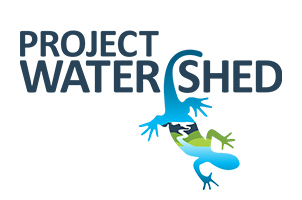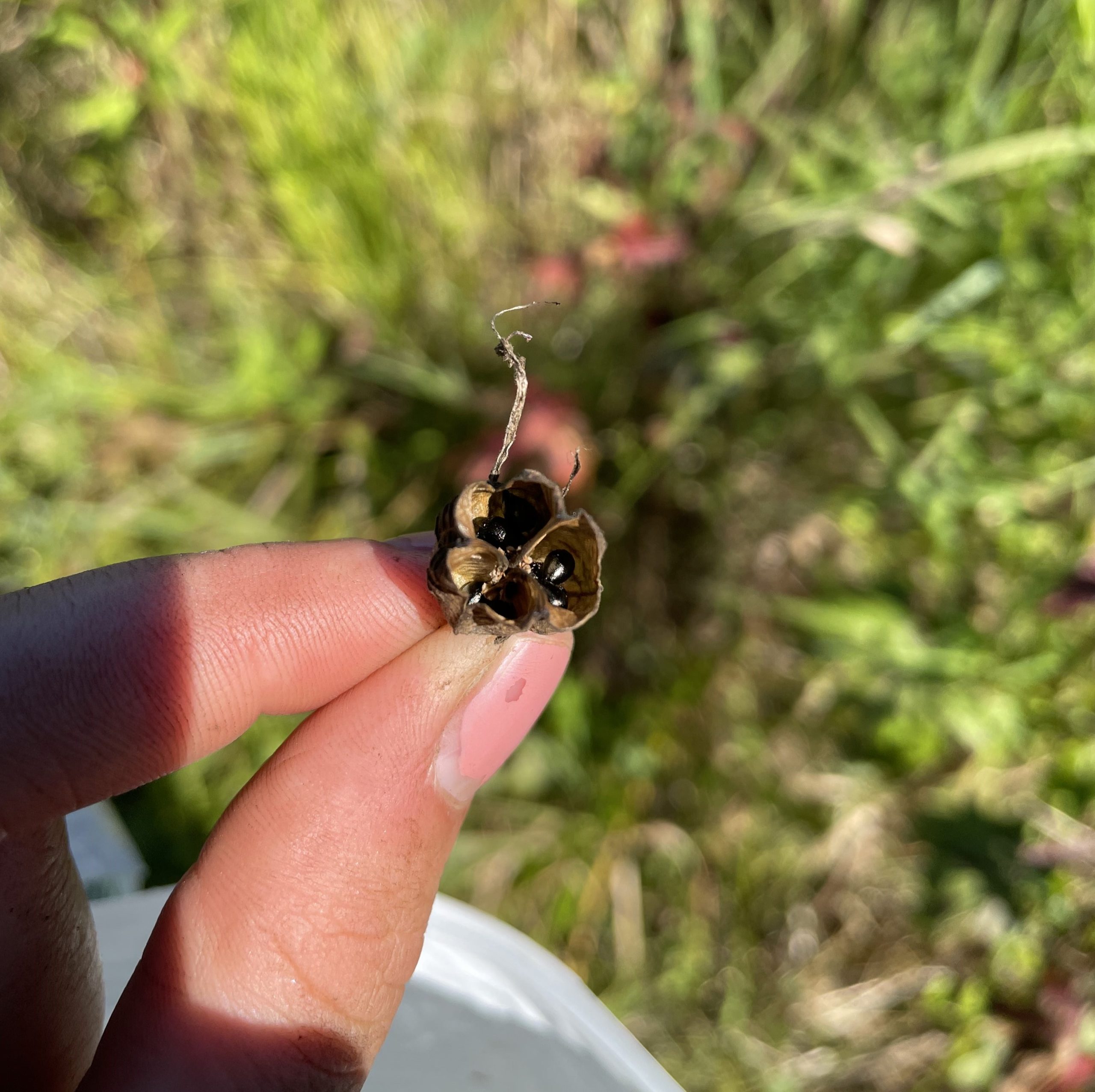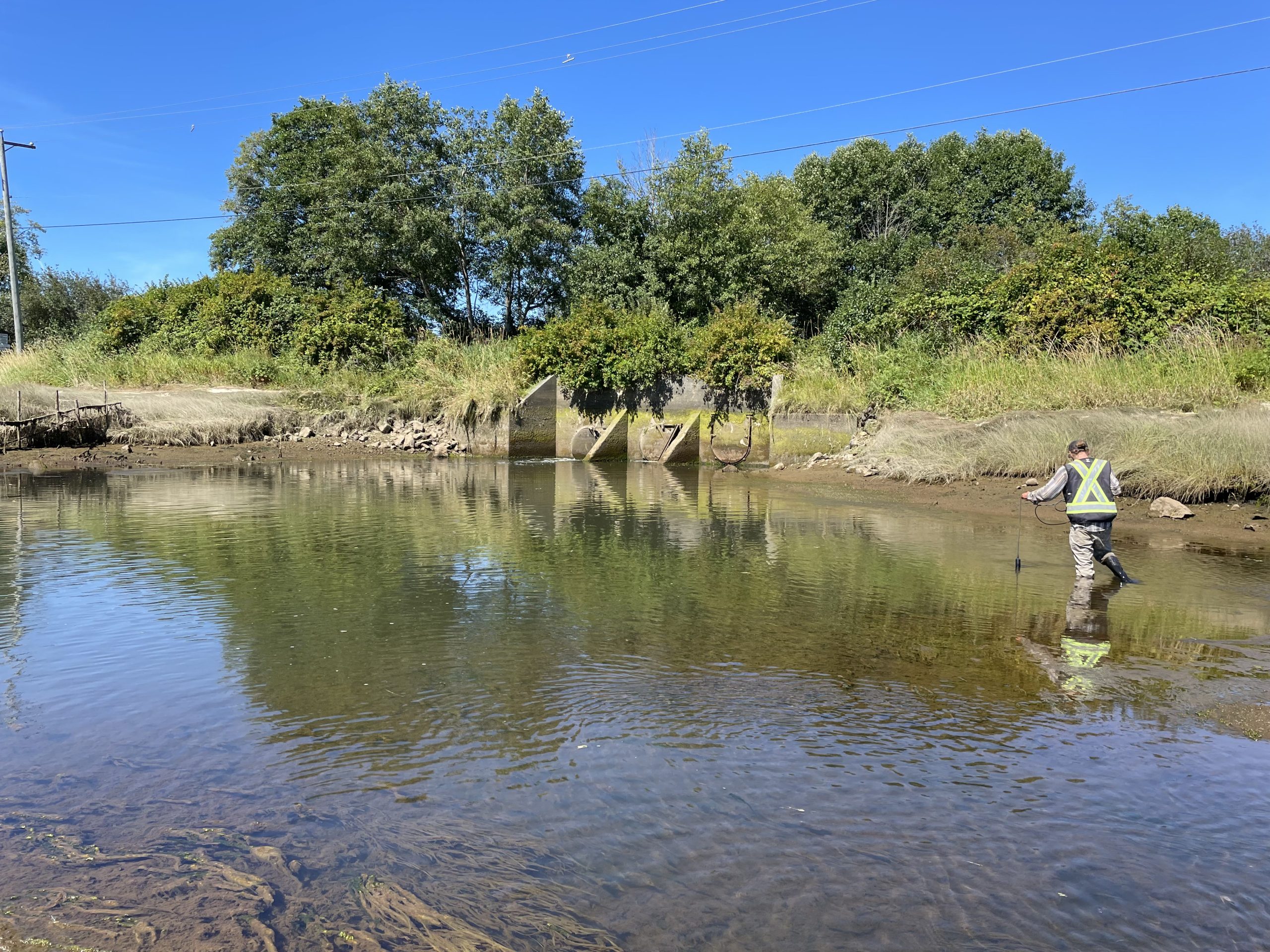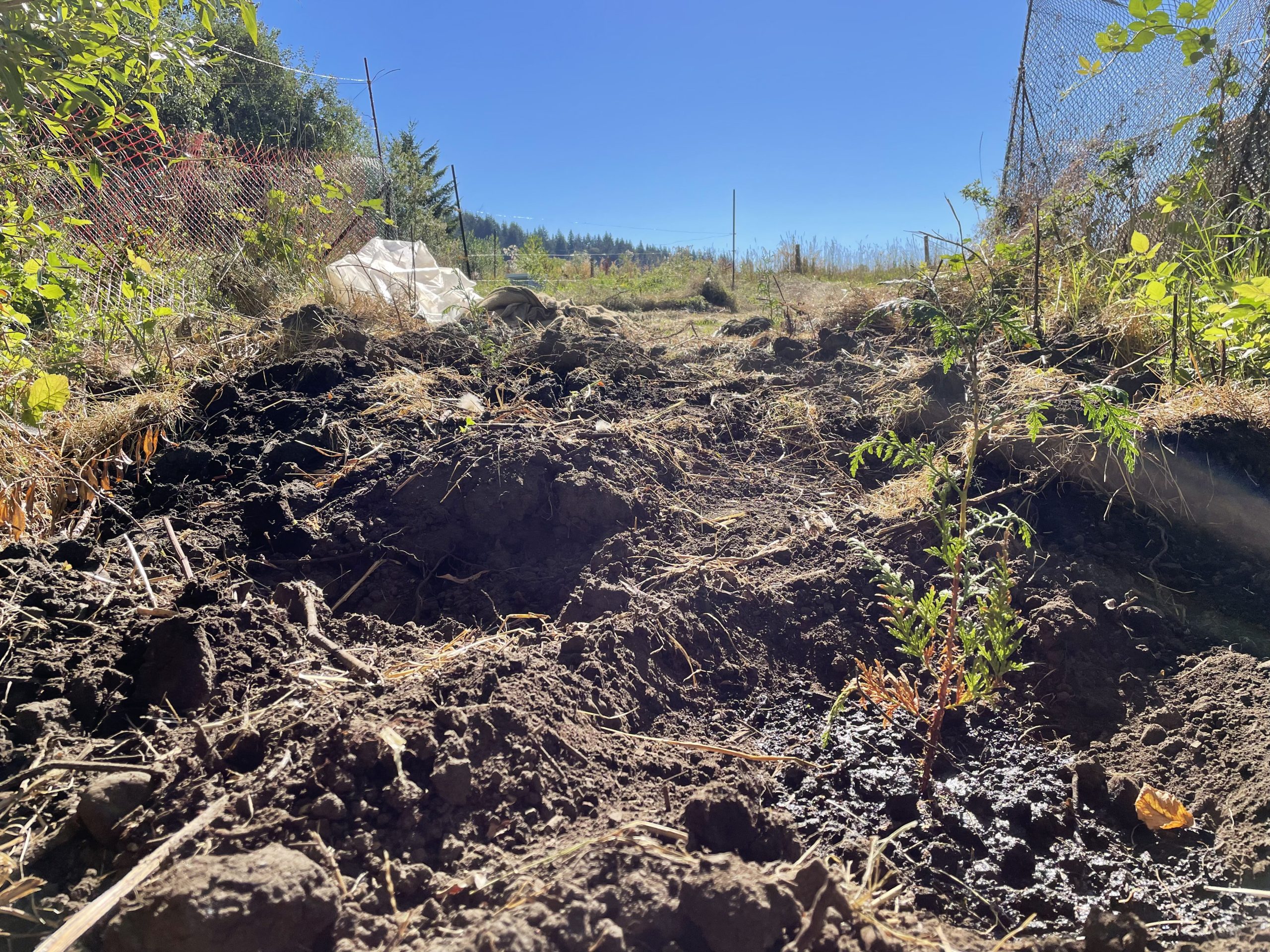Technician Tuesday Report – Harvesting Camas Seeds – August 23
Camas Seeds ~ R. McDonald
Water Quality Monitoring at Mallard Creek ~ R. McDonald
Planting Cedar and Willow at Glen Urquhart ~ R. McDonald
New riffle construction at Glen Urquhart ~ By L. Stewart
The pair were in Hollyhock flats on Tuesday looking for Camas to collect seeds from. This was exciting work as the seeds will be germinated and transplanted at another Project Watershed site. Camas (Camassia sp.) is now very rare in Comox Valley and has important ecological and cultural significance.
Did you Know…
Victoria was originally known as Camosun, or the “place to gather Camas” in the Lekwungen language.
Camas is an important harvest species for Coast Salish peoples. These nations harvested the Camas for their onion-like bulbs and cultivated the Garry Oak meadows they are commonly found in using traditional techniques. The Camas grew larger and the growing season was longer thanks to their meticulous care…
It was an acoustic scavenger hunt in a maze of cattail; most of the Camas has dried up for the season, and the seeds are in dry, cup-like structures that sound like small rattles blowing in the breeze. They only harvested 10% of the total seed pods found to ensure the Camas will continue to establish in the Hollyhock Flats for years to come.
… The introduction of livestock, new crops and urban development pushed out local peoples and their food.
The Garry Oak ecosystem is now one of the most endangered ecosystems in Canada and the Camas flower is no longer as abundant as it once was.
Project Watershed also gained permission from the landowner prior to harvesting – good communication is essential for building lasting, positive relationships between us and everyone involved in our restoration efforts.
At Mallard Creek, Renée and Jay were applying more paper mulching for Reed Canary Grass (RCG) management and they were joined by a few volunteers. It’s great to have a few extra helping hands! They were also monitoring the water quality at Mallard Creek to see if the last week’s work to remove a large amount of RCG improved the stream conditions.
At Glen Urquhart, a few willows and cedars were planted in the cleared areas on the stream banks with more being planted in the coming weeks and throughout the fall.
Related Posts
Fall and Winter Forage Fish Sampling
We’re gearing up for the fall/winter season of forage fish sampling!
Mallard Creek Riparian Planting
We will be planting native riparian species along a section of Mallard Creek that we recently cleared of invasive Reed canarygrass.
Fall Planting at Kus-kus-sum
We are looking for volunteers to assist us with planting native trees, shrubs, and marsh plants at Kus-kus-sum this fall!
A New Day for Forage Fish
Project Watershed and the Coastal Forage Fish Network (CFFN) are celebrating Surf Smet Day on October 25th! This adds another day on which to celebrate and raise awareness about beach spawning forage fish as Pacific sand lance are celebrated on a day in December.
Fall Work at Kus-kus-sum
We are looking for volunteers to assist us with weeding out invasive plants to make room for the native plants arriving later this fall!
Forage Fish Survey Techniques Workshop
The Coastal Forage Fish Network (CFFN) is hosting two one-day workshops to introduce development considerations and methods to survey for beach spawning forage fish for projects that may impact beach spawning forage fish.




